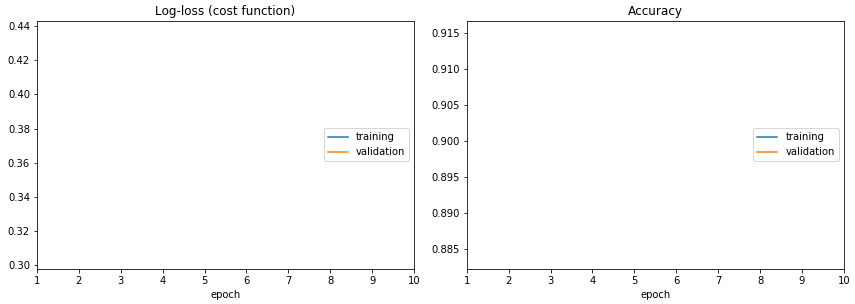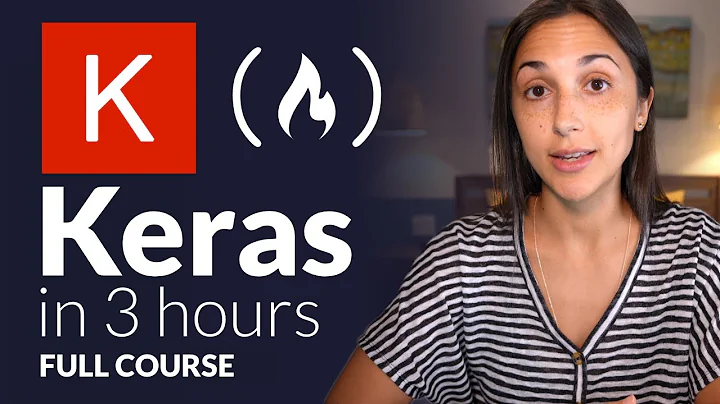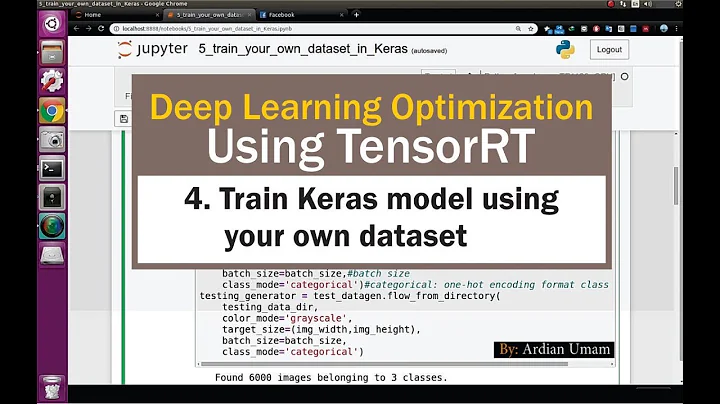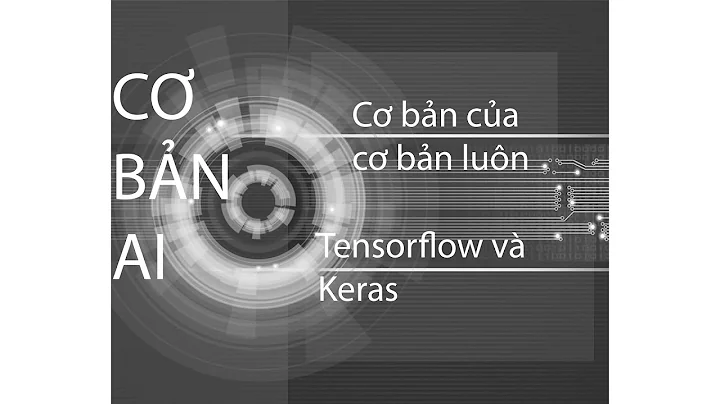Keras + TensorFlow Realtime training chart
Solution 1
There is livelossplot Python package for live training loss plots in Jupyter Notebook for Keras (disclaimer: I am the author).
from livelossplot import PlotLossesKeras
model.fit(X_train, Y_train,
epochs=10,
validation_data=(X_test, Y_test),
callbacks=[PlotLossesKeras()],
verbose=0)
To see how does it work, look at its source, especially this file: https://github.com/stared/livelossplot/blob/master/livelossplot/outputs/matplotlib_plot.py (from IPython.display import clear_output and clear_output(wait=True)).
A fair disclaimer: it does interfere with Keras output.
Solution 2
Keras comes with a callback for TensorBoard.
You can easily add this behaviour to your model and then just run tensorboard on top of the logging data.
callbacks = [TensorBoard(log_dir='./logs')]
result = model.fit(X, Y, ..., callbacks=callbacks)
And then on your shell:
tensorboard --logdir=/logs
If you need it in your notebook, you can also write your own callback to get metrics while training:
class LogCallback(Callback):
def on_epoch_end(self, epoch, logs=None):
print(logs["train_accuracy"])
This would get the training accuracy at the end of the current epoch and print it. There's some good documentation around it on the official keras site.
Related videos on Youtube
Shlomi Schwartz
Updated on September 15, 2022Comments
-
Shlomi Schwartz over 1 year
I have the following code running inside a Jupyter notebook:
# Visualize training history from keras.models import Sequential from keras.layers import Dense import matplotlib.pyplot as plt import numpy # fix random seed for reproducibility seed = 7 numpy.random.seed(seed) # load pima indians dataset dataset = numpy.loadtxt("pima-indians-diabetes.csv", delimiter=",") # split into input (X) and output (Y) variables X = dataset[:,0:8] Y = dataset[:,8] # create model model = Sequential() model.add(Dense(12, input_dim=8, kernel_initializer='uniform', activation='relu')) model.add(Dense(8, kernel_initializer='uniform', activation='relu')) model.add(Dense(1, kernel_initializer='uniform', activation='sigmoid')) # Compile model model.compile(loss='binary_crossentropy', optimizer='adam', metrics=['accuracy']) # Fit the model history = model.fit(X, Y, validation_split=0.33, epochs=150, batch_size=10, verbose=0) # list all data in history print(history.history.keys()) # summarize history for accuracy plt.plot(history.history['acc']) plt.plot(history.history['val_acc']) plt.title('model accuracy') plt.ylabel('accuracy') plt.xlabel('epoch') plt.legend(['train', 'test'], loc='upper left') plt.show() # summarize history for loss plt.plot(history.history['loss']) plt.plot(history.history['val_loss']) plt.title('model loss') plt.ylabel('loss') plt.xlabel('epoch') plt.legend(['train', 'test'], loc='upper left') plt.show()The code collects epochs history, then displays the progress history.
Q: How can I make the chart change while training so I can see the changes in real time?
-
Shamoon about 5 yearsDoes this only with for
Jupyternotebooks? -
Lucas Farias about 5 yearsBut does TensorBoard show you live trainning data or can you only see it after training the model?
-
Dinesh almost 4 yearsI had a question after using the library, livelossplot. I observed the following metrics: validation (min: 113.068, max: 1852.994, cur: 117.239). I clearly get the meaning of 'min' and 'max', but what does 'cur' actually mean ?
-
Piotr Migdal almost 4 yearsNow it is not only for Jupyter.
-
 glicerico over 3 years@LucasFarias you can see it real time with Tensorboard
glicerico over 3 years@LucasFarias you can see it real time with Tensorboard -
 jtlz2 about 3 years@Dinesh "Current", surely?
jtlz2 about 3 years@Dinesh "Current", surely?













